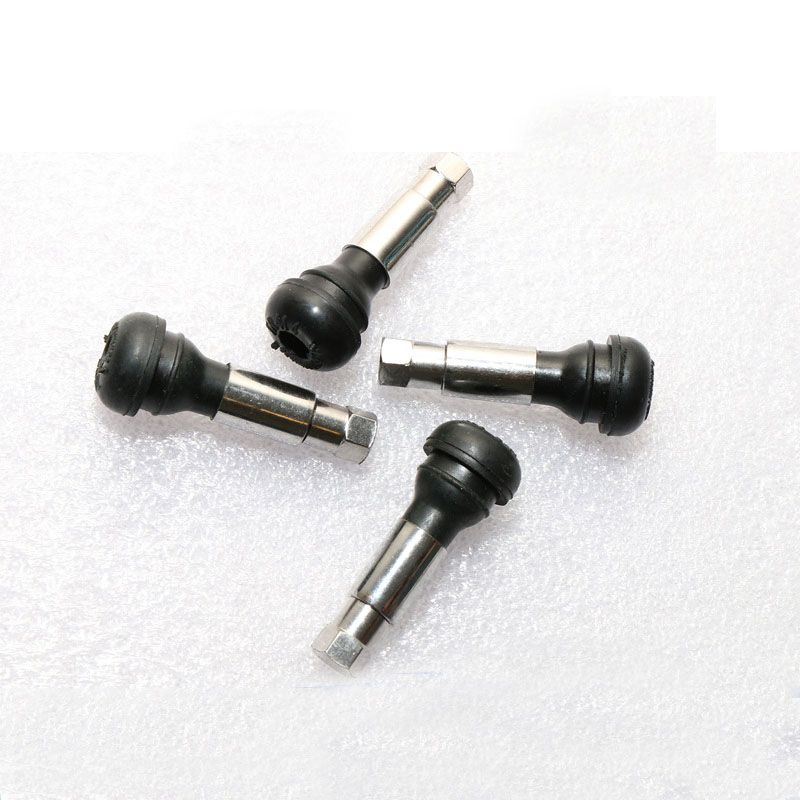When Do I Need to Replace Valve Stems and Valves on My Tires?
If you’ve ever put air in a tire, or checked the air pressure, then you know what a valve stem is. It’s the little tube on your rim that lets you put the air (or nitrogen) in. Inside that tube us the valve, or the actual mechanism that controls the flow of air.
Even though this little component gets used every time you change your tires, get a flat, or check your air pressure, you’ve probably never even thought about changing it. In fact, right now I bet you’re thinking “What’s the difference? It’s not like it’s part of the tire. What could go wrong if I keep using it?”
WHAT CAN GO WRONG?
Well, kind of a lot. You see, as they age, just like any other part of your car, they can begin to break down and develop leaks, which in turn can cause tire problems. Premature or irregular wear and flats or even damage to the TPMS (Tire Pressure Monitoring System) can result from these leaks.
It’s not just age that can cause a valve stem to malfunction, either. UV rays, heat and salt can cause cracks, they can get cut by wheel covers if they’re not replaced properly, and rubbing against curbs or rocks can break or damage them.
Even if it’s a slow leak it’ll mean you’re constantly checking your air pressure and filling up the tire. You may even end up replacing tires you should have gotten more time out of, either because you think they’re the problem or because of damage caused by underinflation! So this seemingly insignificant part can actually end up being pretty costly if it’s not replaced occasionally.
WHEN TO REPLACE VALVE STEMS:
A good test for damage is to flex the stem. If you see damage or cracks or the rubber looks really old and dry, replace it.
If you’re changing your tires it’s a good idea to change the valve stems, too. They’re usually a few dollars, so it’s pretty cheap thing to add on to your installation.
ARE ALL VALVE STEMS THE SAME?
No they are not. A rim with TPMS will have a different stem than a rim without one. The TPMS ones are usually compatible with the system, either a snap in rubber version or sometimes an aluminum one. But don’t worry, you don’t have to go figuring out what’s the difference, because your mechanic will know which stem is right for your vehicle!
There are also metal and rubber stems. Metal stems aren’t necessarily better than rubber ones, but they are used a lot for appearance. For example, they’ll be a better match with your fancy chrome rims. However, it’s very important to remember that the stem has to be compatible with the valve. Since most metal stems are aluminum, you don’t want to use them with a brass valve! Aluminum and brass together result in a galvanic reaction that leads to corrosion and valve failure. So generally, aluminum stems are used with valves that are nickel plated.
LENGTH MATTERS!
Like I just said, not all stems are the same, and that goes for length as well. Stems come in different sizes to fit different needs. So, if you have wheel covers, you can use a valve stem that lets you check and refill your tire without taking the cover off. Aside from different valve stem lengths, they also make valve stem extenders, so if you’re not ready to change the whole thing you can still adjust the length. However, you have to be careful with these, as they may not seal properly, and that can obviously cause leaks, or worse, let water and dirt get into the core, corroding the valve.
WHAT ABOUT NITROGEN AND NITROFILL?
Nitrogen inflation requires better-sealing metal valve caps. These caps are usually silver and usually have a green top with an N or N2 on it (for Nitrogen, obviously). They usually look more like a screw nut than a cap. Since Nitrogen fill is generally pricier than air, you want to make sure it lasts, so it’s a good idea to check these stems regularly. If you do use nitrogen regularly, avoid topping up the tire pressure with regular air. It doesn’t cause any crazy reactions or harm, but it does end up defeating the purpose of using Nitrogen by cancelling out all the advantages.
Previous: WHY THE TIRE CAP IS IMPORTANT
























